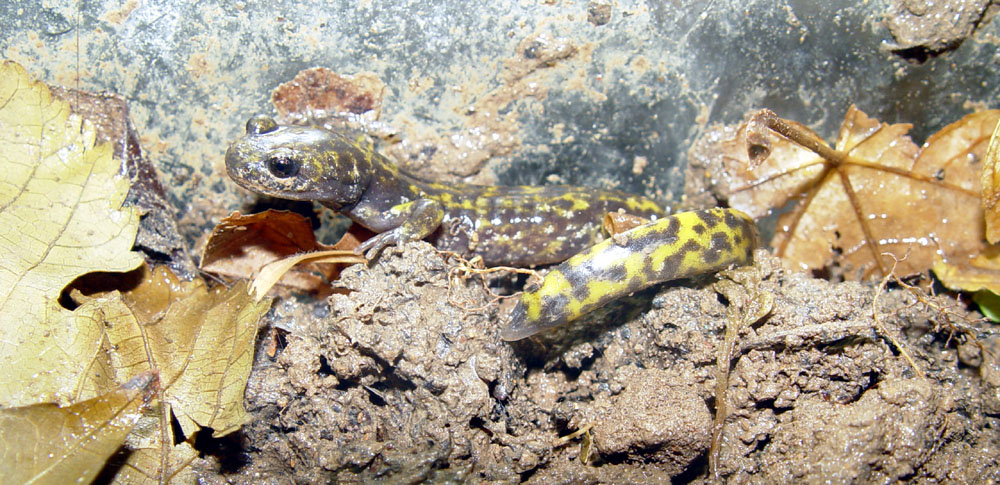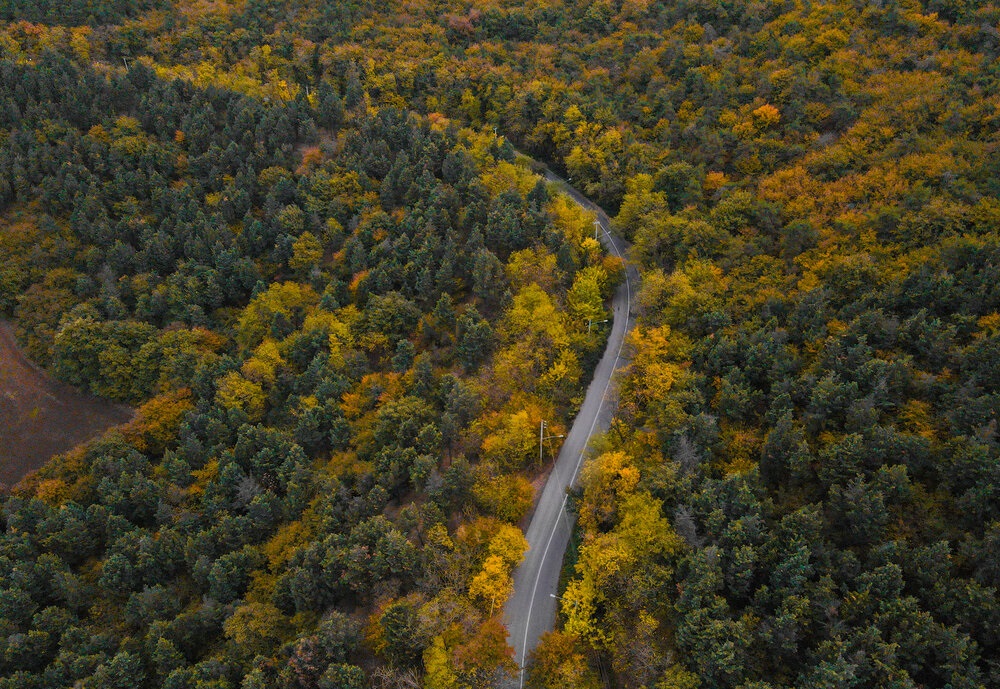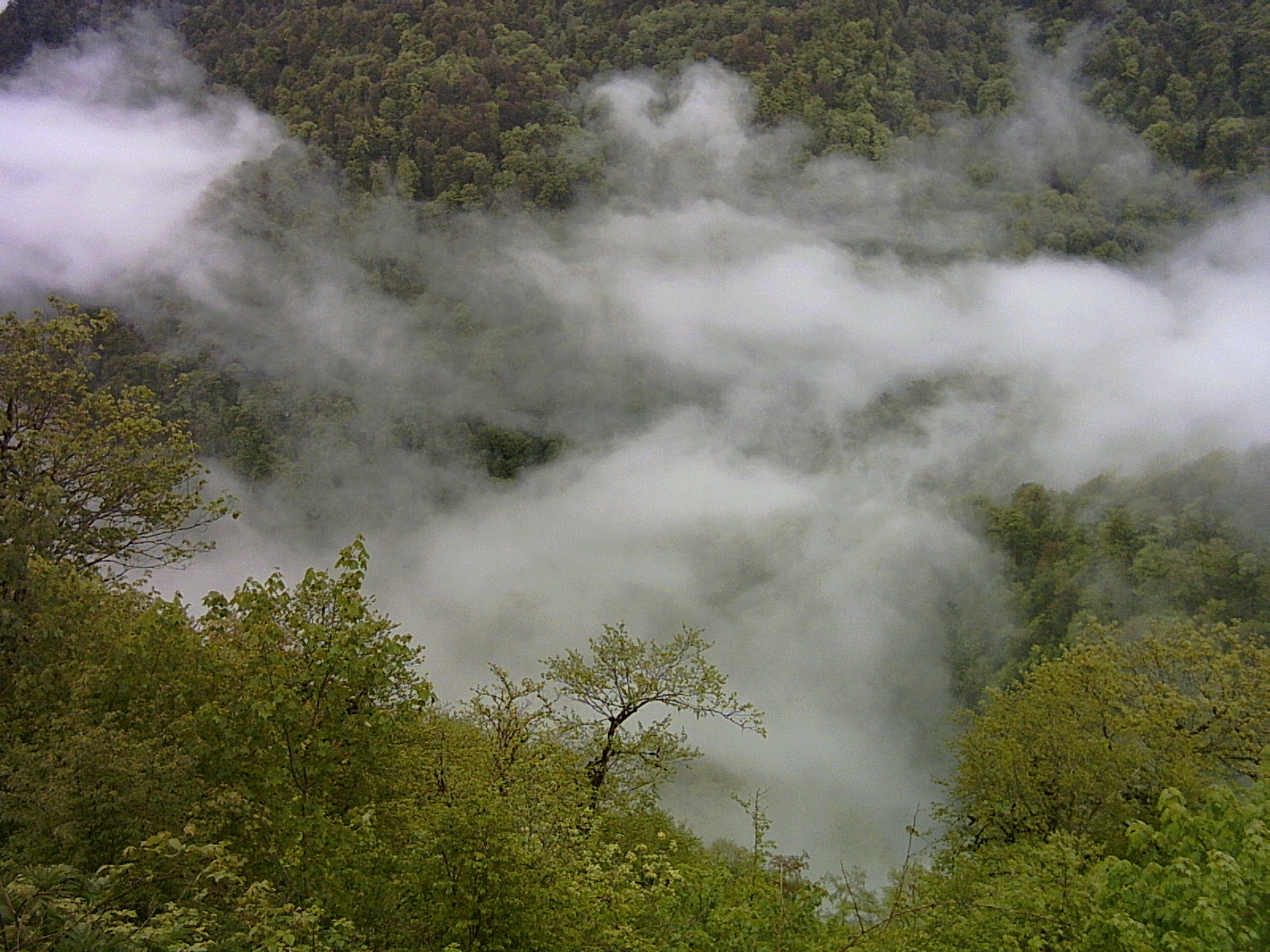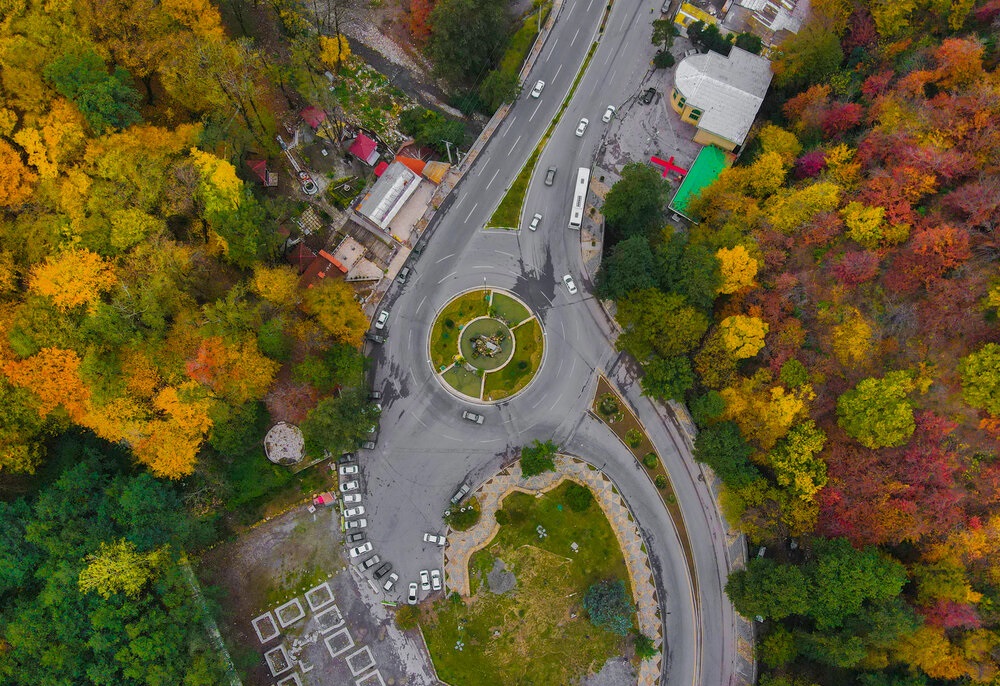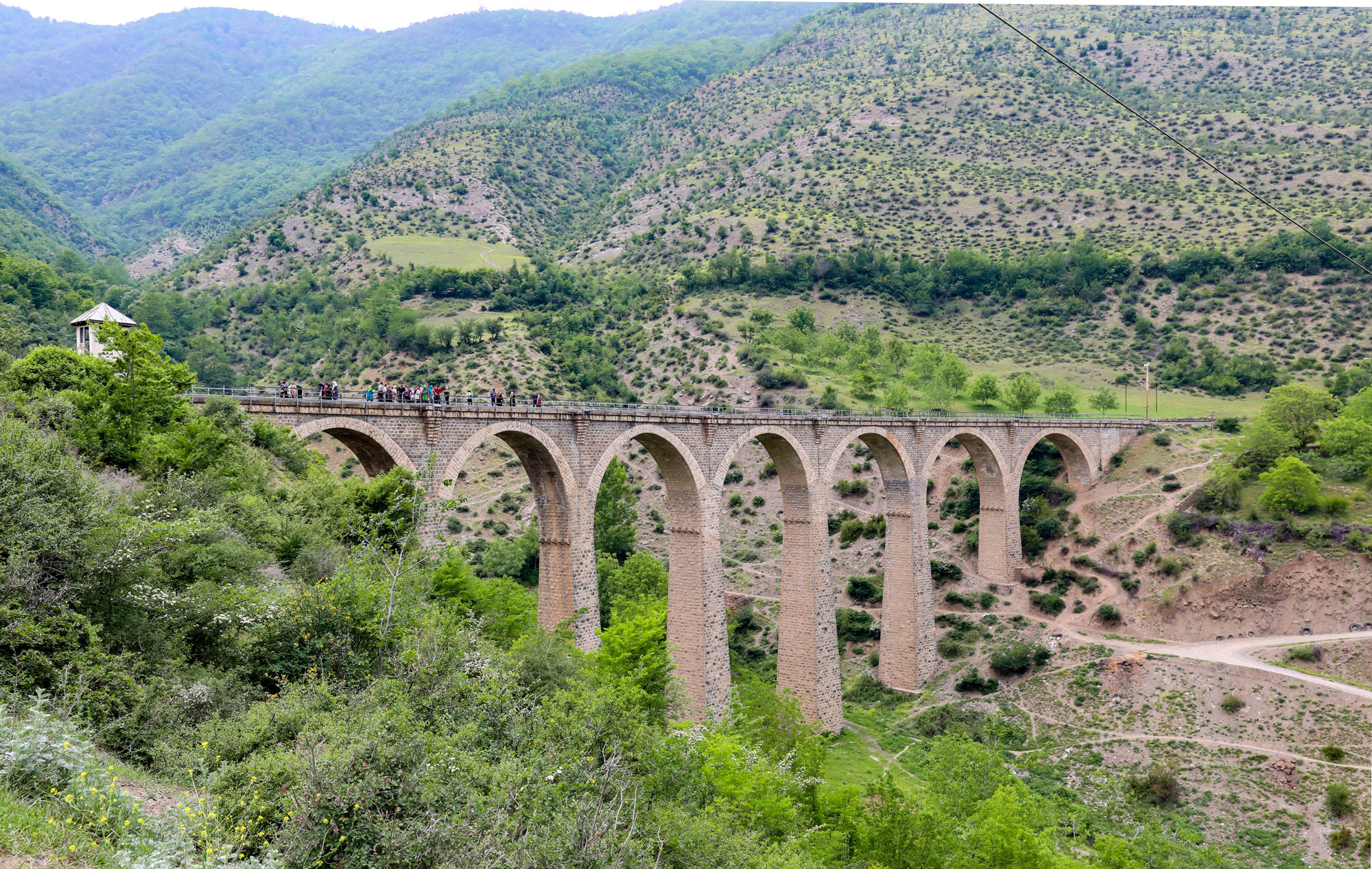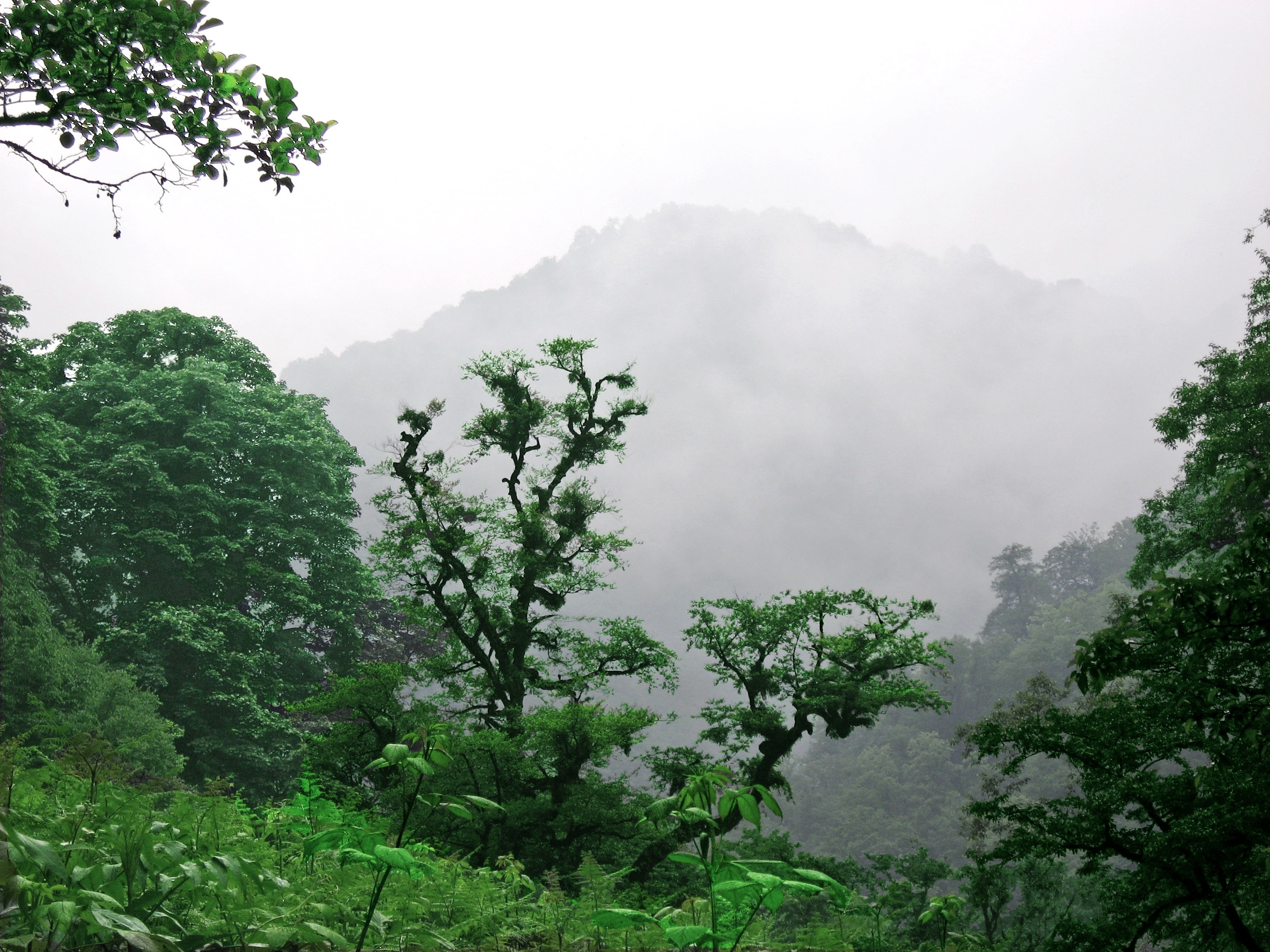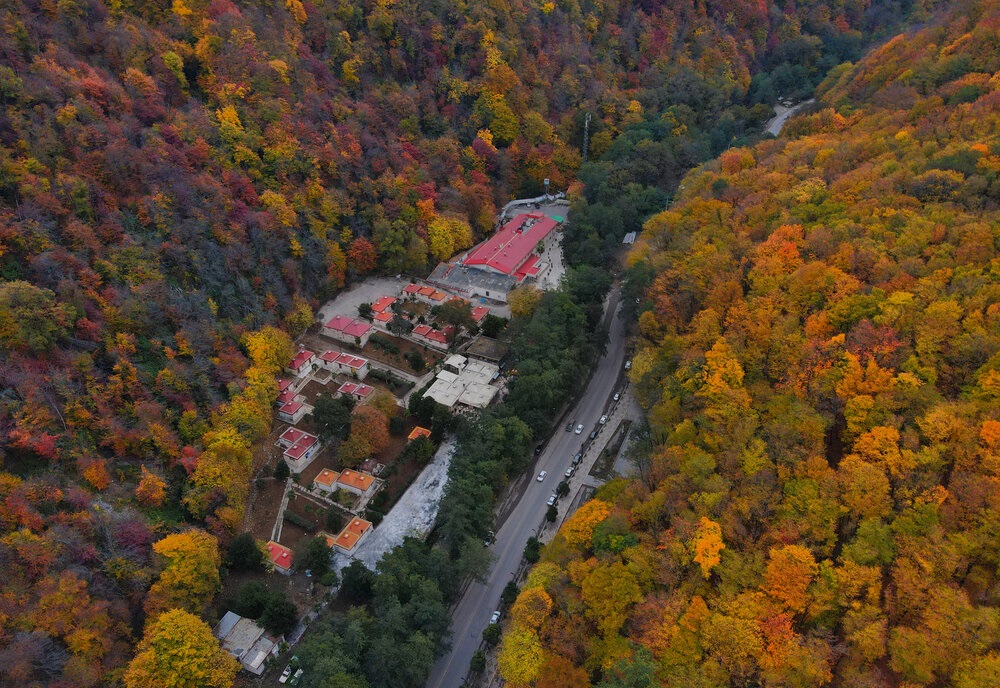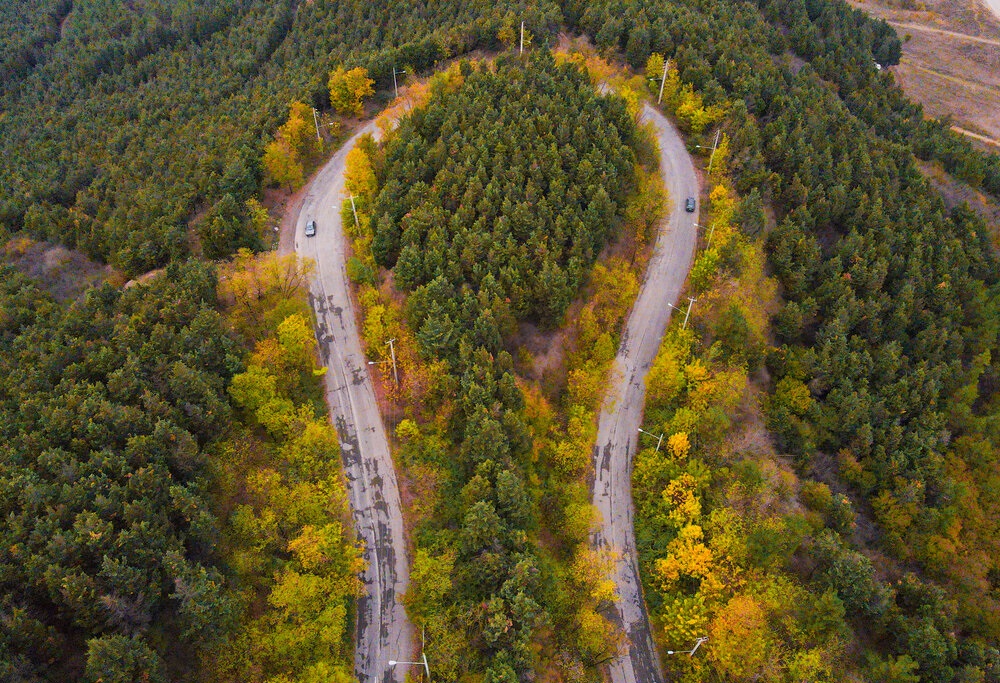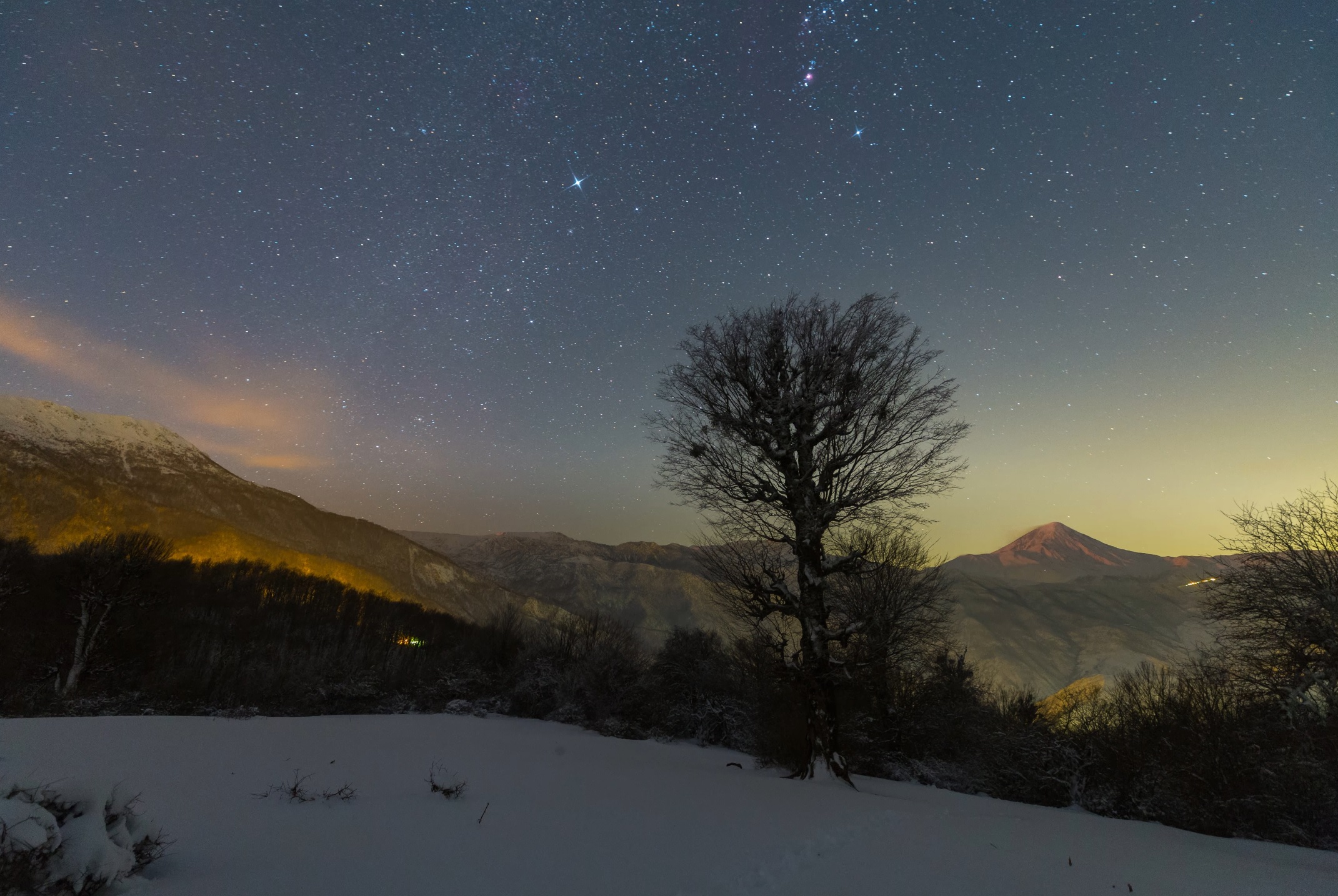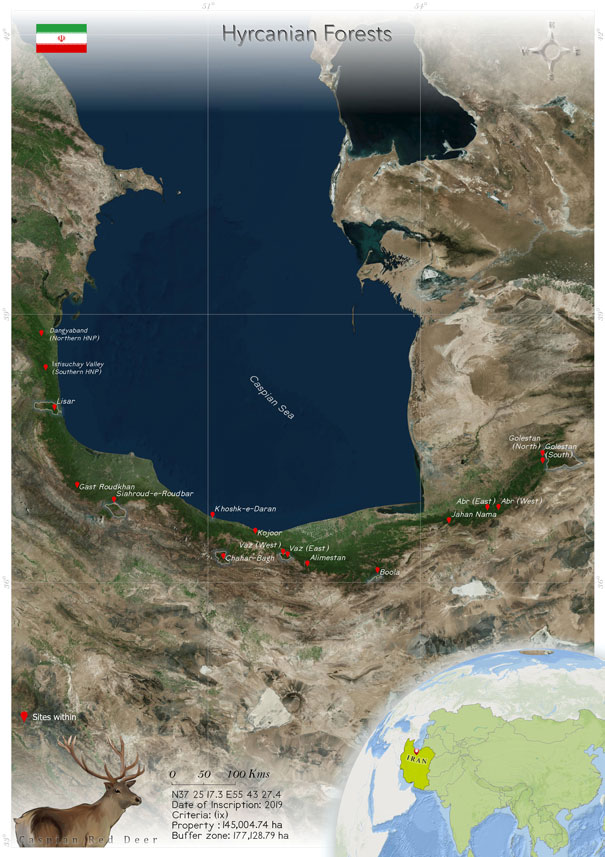
The Hyrcanian Forest (1584)
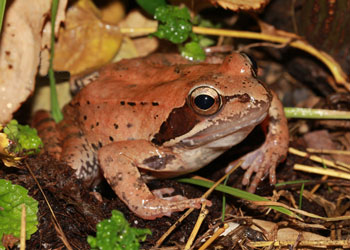 Known for its extraordinary and enormous stretch of deciduous vegetation, the Hyrcanian forests of Iran run along the coast of the Caspian Sea and the northern slopes of the mighty Mount Alborz. They extend along south-eastern Azerbaijan to Golestan Province, in east Iran. The Hyrcanian forests are known to harbour a rich biodiversity that makes it very important for conservation. They also have extraordinary landscapes. They are part of the Caucasus Biodiversity Hotspot. They support a diverse community of large mammals, such as the Persian leopard, brown bear, grey wolf, Caspian red deer, roe deer and wild boar, as well as birds, amphibians and reptiles. Despite the Hyrcanian forests being a protected area, several human activities have had an impact on the biodiversity and ecosystems of the site.
Known for its extraordinary and enormous stretch of deciduous vegetation, the Hyrcanian forests of Iran run along the coast of the Caspian Sea and the northern slopes of the mighty Mount Alborz. They extend along south-eastern Azerbaijan to Golestan Province, in east Iran. The Hyrcanian forests are known to harbour a rich biodiversity that makes it very important for conservation. They also have extraordinary landscapes. They are part of the Caucasus Biodiversity Hotspot. They support a diverse community of large mammals, such as the Persian leopard, brown bear, grey wolf, Caspian red deer, roe deer and wild boar, as well as birds, amphibians and reptiles. Despite the Hyrcanian forests being a protected area, several human activities have had an impact on the biodiversity and ecosystems of the site.
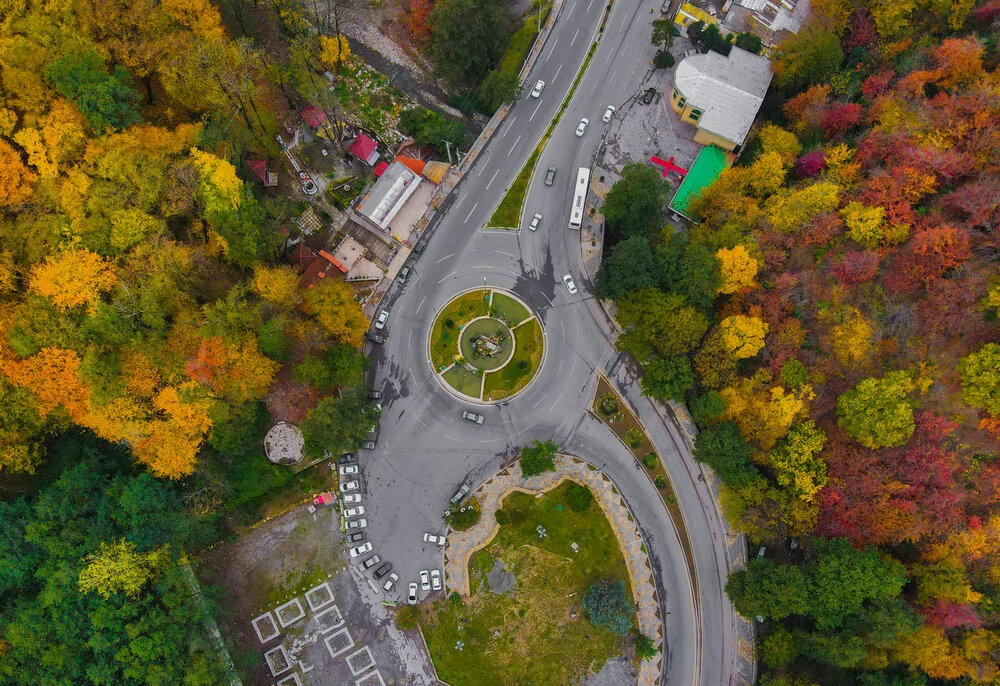 The Hyrcanian Forests form a green arc of deciduous mixed broad-leaved forests stretching across some 900 kilometres along the Caspian Sea, from the Talish Mountains in the Republic of Azerbaijan across the Alborz Mountains all the way to Golestan Province in the Islamic Republic of Iran. The property undergone significant boundary modification and extends over 145,004.74 ha, with a buffer area of 219,431.41 ha. The property is a serial site with 17 component parts shared across three Provinces (Gilan, Mazandaran and Golestan) in Iran and across two Districts (Lenkoran and Astara) in Azerbaijan and represents examples of the various stages and features of Hyrcanian forest ecosystems. The bioclimatic conditions of the Hyrcanian forests rely on various factors. The rainfall is seasonal, which gives rise to very clear differences in the topography and geomorphology of the southern and northern regions of the Alborz Mountain Range. There are dense forests on the northern slope, and there is the Kavir Desert on the southern slopes (Knapp 2000). Due to the different altitude zones, several types of vegetation are found in the Hyrcanian forests, including alluvial and lowland deciduous forests, submontane and montane deciduous forests, subalpine deciduous forests (Quercus macranthera), sub-alpine and alpine meadows, montane steppes and dune vegetation along the Caspian Sea coast and aquatic vegetation in wetlands (Akhani et al. 2010). The most dominant species are Oriental beech (Fagus orientalis), chestnut-leaved oak (Quercus castaneifolia) and European hornbeam (Carpinus betulus).
The vegetation is composed mostly of deciduous forests. In the lower altitudes of the forest slopes, species such as Parrotia persica, Gleditsia caspica, Pterocarya fraxinifolia and Zelkova carpinifolia form most of the cover. Over 3234 species of vascular plant (with 43 of these being ferns and fern allies), in 15 families and 23 genera, have been reported to be endemic to the Hyrcanian forests. So far, 3234 species belonging to 856 genera and 148 families of vascular plant have been reported from the northern provinces of Iran and from Talish, in the Republic of Azerbaijan (Akhani et al. 2010).
The Hyrcanian Forests form a green arc of deciduous mixed broad-leaved forests stretching across some 900 kilometres along the Caspian Sea, from the Talish Mountains in the Republic of Azerbaijan across the Alborz Mountains all the way to Golestan Province in the Islamic Republic of Iran. The property undergone significant boundary modification and extends over 145,004.74 ha, with a buffer area of 219,431.41 ha. The property is a serial site with 17 component parts shared across three Provinces (Gilan, Mazandaran and Golestan) in Iran and across two Districts (Lenkoran and Astara) in Azerbaijan and represents examples of the various stages and features of Hyrcanian forest ecosystems. The bioclimatic conditions of the Hyrcanian forests rely on various factors. The rainfall is seasonal, which gives rise to very clear differences in the topography and geomorphology of the southern and northern regions of the Alborz Mountain Range. There are dense forests on the northern slope, and there is the Kavir Desert on the southern slopes (Knapp 2000). Due to the different altitude zones, several types of vegetation are found in the Hyrcanian forests, including alluvial and lowland deciduous forests, submontane and montane deciduous forests, subalpine deciduous forests (Quercus macranthera), sub-alpine and alpine meadows, montane steppes and dune vegetation along the Caspian Sea coast and aquatic vegetation in wetlands (Akhani et al. 2010). The most dominant species are Oriental beech (Fagus orientalis), chestnut-leaved oak (Quercus castaneifolia) and European hornbeam (Carpinus betulus).
The vegetation is composed mostly of deciduous forests. In the lower altitudes of the forest slopes, species such as Parrotia persica, Gleditsia caspica, Pterocarya fraxinifolia and Zelkova carpinifolia form most of the cover. Over 3234 species of vascular plant (with 43 of these being ferns and fern allies), in 15 families and 23 genera, have been reported to be endemic to the Hyrcanian forests. So far, 3234 species belonging to 856 genera and 148 families of vascular plant have been reported from the northern provinces of Iran and from Talish, in the Republic of Azerbaijan (Akhani et al. 2010).
Criterion (ix)
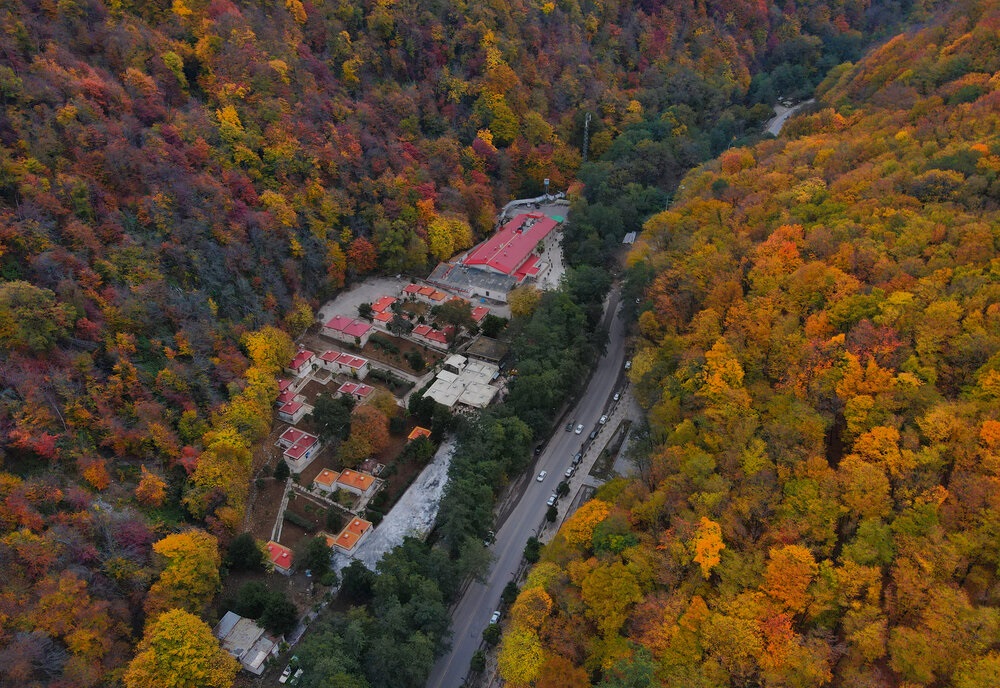 The property represents a remarkable series of sites conserving the natural forest ecosystems of the Hyrcanian Region. Its component parts contain exceptional broad-leaved forests with a history dating back 25 - 50 million years ago, when such forests covered most parts of the Northern Temperate region. These huge ancient forest areas retreated during Quaternary glaciations and later, during milder climate periods, expanded again from these refugia. The property covers most environmental features and ecological values of the Hyrcanian region and represents the most important and key environmental processes illustrating the genesis of those forests, including succession, evolution and speciation. The floristic biodiversity of the Hyrcanian region is remarkable at the global level with over 3,200 vascular plants documented. Due to its isolation, the property hosts many relicts, endangered, and regionally and locally endemic plant species, contributing to the ecological significance of the property, and the Hyrcanian region in general. Approximately 280 taxa are endemic and sub-endemic for the Hyrcanian region and about 500 plant species are Iranian endemics.
The ecosystems of the property support populations of many forest birds and mammals of the Hyrcanian region which are significant on national, regional and global scales. To date, 180 species of birds typical of broadleaved temperate forests have been recorded in the Hyrcanian region including Steppe Eagle, European Turtle Dove, Eastern Imperial Eagle, European Roller, Semi-collared Flycatcher and Caspian Tit. Some 58 mammal species have been recorded across the region, including the iconic Persian Leopard and the threatened Wild Goat.
The property represents a remarkable series of sites conserving the natural forest ecosystems of the Hyrcanian Region. Its component parts contain exceptional broad-leaved forests with a history dating back 25 - 50 million years ago, when such forests covered most parts of the Northern Temperate region. These huge ancient forest areas retreated during Quaternary glaciations and later, during milder climate periods, expanded again from these refugia. The property covers most environmental features and ecological values of the Hyrcanian region and represents the most important and key environmental processes illustrating the genesis of those forests, including succession, evolution and speciation. The floristic biodiversity of the Hyrcanian region is remarkable at the global level with over 3,200 vascular plants documented. Due to its isolation, the property hosts many relicts, endangered, and regionally and locally endemic plant species, contributing to the ecological significance of the property, and the Hyrcanian region in general. Approximately 280 taxa are endemic and sub-endemic for the Hyrcanian region and about 500 plant species are Iranian endemics.
The ecosystems of the property support populations of many forest birds and mammals of the Hyrcanian region which are significant on national, regional and global scales. To date, 180 species of birds typical of broadleaved temperate forests have been recorded in the Hyrcanian region including Steppe Eagle, European Turtle Dove, Eastern Imperial Eagle, European Roller, Semi-collared Flycatcher and Caspian Tit. Some 58 mammal species have been recorded across the region, including the iconic Persian Leopard and the threatened Wild Goat.
Status
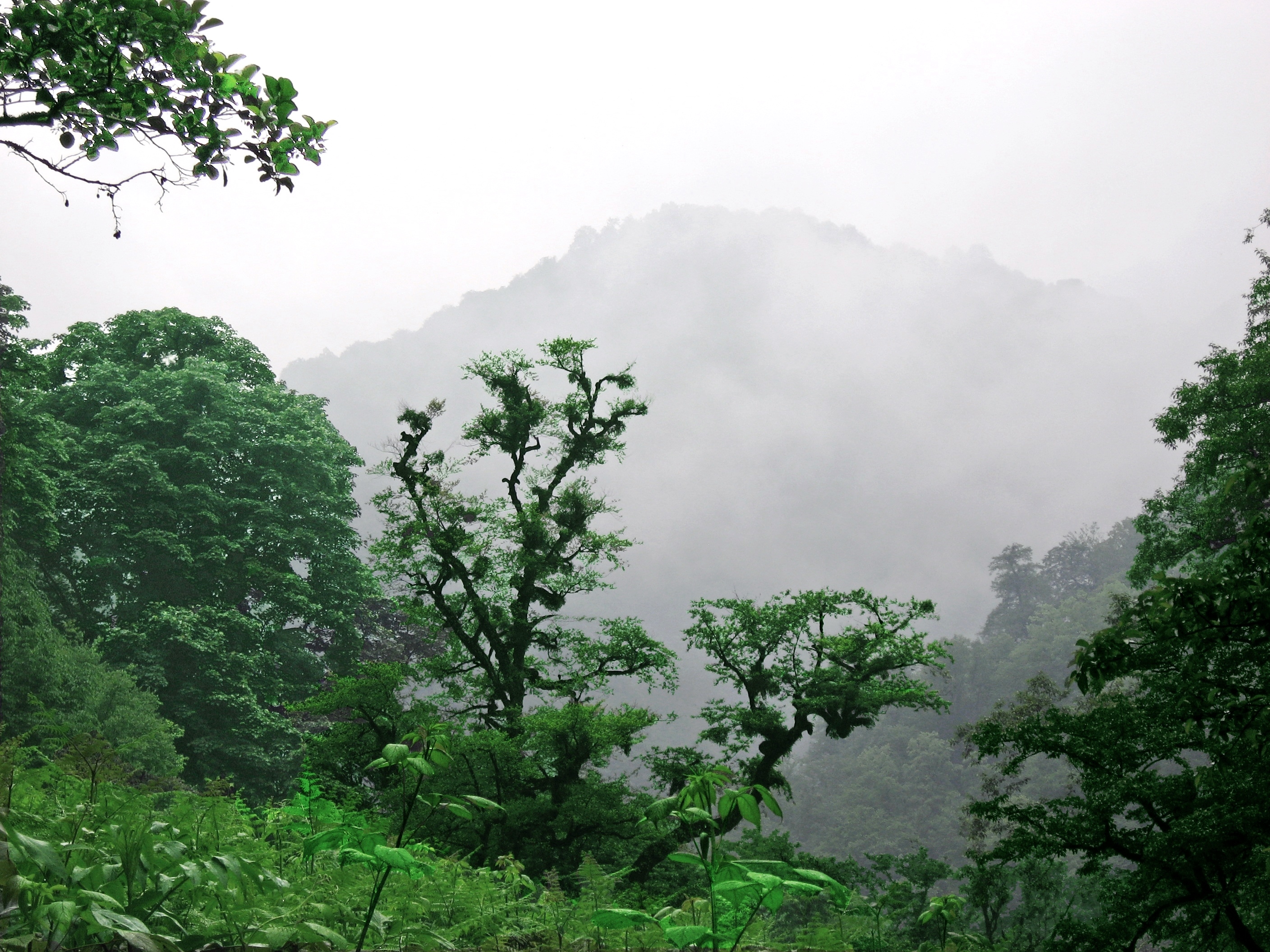 Protected areas have buffer zones in which specific tourism activities are allowed. However, even in the core zone of the Hyrcanian forests, people engage in intense livestock grazing and logging (Soofi et al. 2018). Due to excessive grazing and farming, there was insufficient fodder supply from the forests and it was not feasible to use the Hyrcanian forests for economic purposes (Noack et al. 2010). Livestock grazing adversely affected the distribution of the endemic mammal species of the Hyrcanian forests, namely, the Persian leopard, Caspian red deer and roe deer (Soofi et al. 2018). The red deer, in particular, was seen to be under consistent pressure from logging as this activity provided access to core zones for poachers (Laurance et al. 2008; Brodie et al. 2015). According to the IUCN Outlook report of 2020, anthropogenic activities, primarily road construction through the forests have impacted the vegetation and wildlife. The indigenous people in the buffer zone have been indulging in livestock grazing and tree logging. The former causes intense landscape degradation and affects the distribution of the mammals. The vegetation structure and natural food chain of herbivores is altered due to trophic competition (Maxwell et al. 2016; Gordon et al. 2017).
After the Hyrcanian forests were inscribed as a World Heritage Site, the Iran government has been able to lay down certain rules and regulations to protect the national property. Reports mention that about 60% of the Hyrcanian forests are under legal protection and natural resource use is managed by the government (Zehzad et al. 2002; Firouz 2005; Makhdoum, 2008; Dabiri et al. 2010; Müller et al. 2017). Three particular parties manage the property: Department of Environment, Iranian Forest Range; Watershed & Management Organization; and Cultural Heritage, Handicrafts and Tourism Organization.
Hunting of endemic animals in the Hyrcanian region has been one of the major concerns of the Iranian government and management authorities. After assessing the factors affecting the property, the government assigned three parties to handle the management of the Heritage site: Department of Environment, Iranian Forest Range; Watershed & Management Organization; and Cultural Heritage, Handicrafts, and Tourism Organization. The assessment by the IUCN concluded that the site is at a state with significant concerns (IUCN 2019; State Party of Iran 2018).
Protected areas have buffer zones in which specific tourism activities are allowed. However, even in the core zone of the Hyrcanian forests, people engage in intense livestock grazing and logging (Soofi et al. 2018). Due to excessive grazing and farming, there was insufficient fodder supply from the forests and it was not feasible to use the Hyrcanian forests for economic purposes (Noack et al. 2010). Livestock grazing adversely affected the distribution of the endemic mammal species of the Hyrcanian forests, namely, the Persian leopard, Caspian red deer and roe deer (Soofi et al. 2018). The red deer, in particular, was seen to be under consistent pressure from logging as this activity provided access to core zones for poachers (Laurance et al. 2008; Brodie et al. 2015). According to the IUCN Outlook report of 2020, anthropogenic activities, primarily road construction through the forests have impacted the vegetation and wildlife. The indigenous people in the buffer zone have been indulging in livestock grazing and tree logging. The former causes intense landscape degradation and affects the distribution of the mammals. The vegetation structure and natural food chain of herbivores is altered due to trophic competition (Maxwell et al. 2016; Gordon et al. 2017).
After the Hyrcanian forests were inscribed as a World Heritage Site, the Iran government has been able to lay down certain rules and regulations to protect the national property. Reports mention that about 60% of the Hyrcanian forests are under legal protection and natural resource use is managed by the government (Zehzad et al. 2002; Firouz 2005; Makhdoum, 2008; Dabiri et al. 2010; Müller et al. 2017). Three particular parties manage the property: Department of Environment, Iranian Forest Range; Watershed & Management Organization; and Cultural Heritage, Handicrafts and Tourism Organization.
Hunting of endemic animals in the Hyrcanian region has been one of the major concerns of the Iranian government and management authorities. After assessing the factors affecting the property, the government assigned three parties to handle the management of the Heritage site: Department of Environment, Iranian Forest Range; Watershed & Management Organization; and Cultural Heritage, Handicrafts, and Tourism Organization. The assessment by the IUCN concluded that the site is at a state with significant concerns (IUCN 2019; State Party of Iran 2018).
